When it comes to professional gaming monitors, ZOWIE reigns supreme. Their monitors get used by a ton of professional gamers, and you see them at pretty much every serious CS:GO tournament (sometimes with the logos stickered over, but they’re very recognizable) these days. A lot has been written and said about what makes ZOWIE’s monitors so alluring, but one thing had been lacking from the brand’s flagship monitors in recent months: a 360Hz model.
With GPUs and PCs becoming more and more powerful, there are arguments to be made that the ‘visual standards’ of competitive gaming are going to go up, and people were wondering when (and if) ZOWIE was going to come out with a 360Hz XL monitor. That’s here now, and we’ve sent one over to our reviewer to see if ZOWIE can still call themselves the leaders when it comes to competitive esports displays. Read our full BenQ ZOWIE XL2566K Review to find out!
At A Glance
ZOWIE XL2566K
Used by 313 players ()If you are a competitive gamer who takes their game extremely seriously and you want to get the fastest and smoothest gaming monitor to help you be the best player you can be, then you have to get the ZOWIE XL2566K right now.
Pros
- 360Hz refresh rate along with fast TN panel makes it one of the smoothest monitors out there
- Subtle design
- Small footprint of the base
- Lots of QoL features such as the stand markings, the S switch, the included (and detachable) glare panels, …
- Picture quality is great for a TN panel…
Cons
- … but it doesn’t match IPS panels when it comes to quality
- Expensive for a 1080p monitor
- Low viewing angles
Specs
| Size | 24.5″ |
|---|---|
| Resolution | 1920×1080 |
| Aspect Ratio | 16:9 |
| Refresh Rate | 360 |
| G-Sync | No |
| FreeSync | No |
| Panel Tech | TN |
First Impressions
The XL2566K builds on what has made its predecessors great, and that can be taken quite literally in some cases. The exterior and design is the exact same as that of the XL2546K, but I think that that’s a plus. ‘Never change a winning team,’ they say, and if you ask me the modern XL line of monitors have a design that’s pretty hard to beat. I’ll speak more about the build quality and design in the next section, but I love the fact that they haven’t made any unnecessary changes here.
Inside the box, you’ll find the S Switch, a DP 1.4 cable, an HDMI 2.0 cable, a power cable, a plastic cover, and two plastic monitor shields that you can place on either side of the panel for some more privacy or light blocking. In short: everything that you need to get started can be found in the packaging, and I like that. At this price, cables and the likes should definitely be included, so it’s good to see that ZOWIE delivers. The dust cover is a nice little extra that allows you to protect your fancy monitor from the elements somewhat in case you go for long periods without using it.
Build and Operation
As I said earlier, the XL2566K looks exactly the same as its predecessor, the XL2546K. For me, that’s a huge plus, as I’m of the opinion that ZOWIE pretty much nailed it on that front. One thing that I love about the monitor is that it has such a small footprint. The panel itself isn’t the thinnest or sleekest, but the stand has a very small footprint, especially when compared to some other gaming-focused monitors out there. I seriously don’t get the need for monitor stands with the wingspan of a bald eagle; it looks impressive, but it’s infuriating how much space some monitors take up on your desk.
That’s not the case with the XL2566K. The base measures a mere 18×25 centimeters, and while the stand itself expands outwards a tiny bit it’s not much more than a centimeter or two, making this a very compact monitor indeed. The stand also has a bunch of markings applied to it in all the relevant positions so that you can mark down your ultimate panel position in case you’re sharing the monitor with other people. This also comes in handy if you want to curve the monitor a bit for those lounge sessions where you’re slouched down in your chair when watching some Netflix, for example. You might not make use of those markings at all, but it’s cool to see that they’re there, as it shows how ZOWIE is really thinking about all the little things with this product.
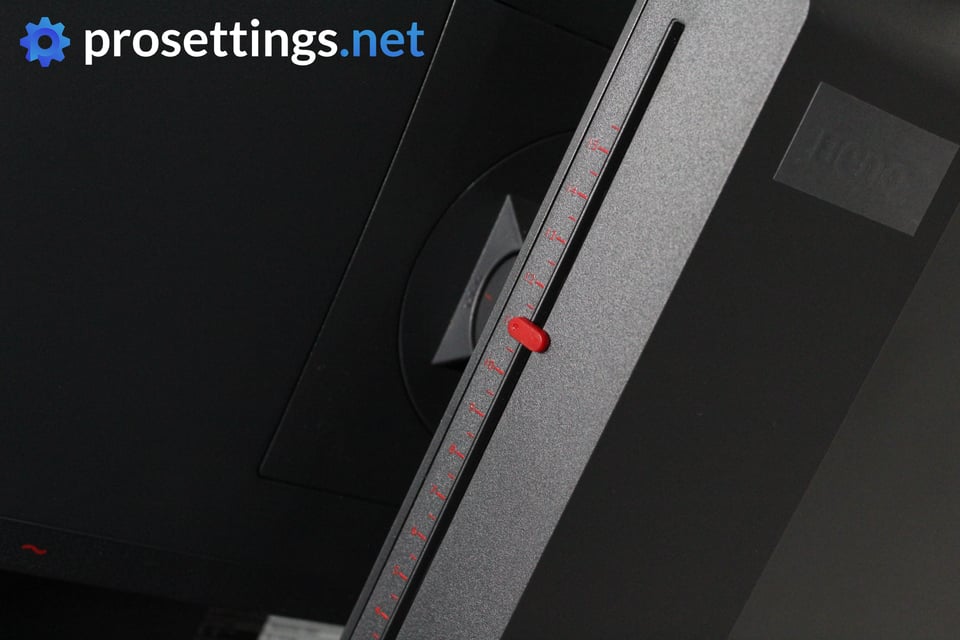
The stand is adjustable in all the right ways: it can tilt, swivel, pivot, and it’s height adjustable, so you’re absolutely certain to find a viewing position that’s comfortable for your posture and desires. All of this works beautifully, and I never had any issues with the monitor (or any ZOWIE monitor) sagging or changing position over time.
Contrary to some of its peers, the XL2566K looks rather subdued. There are no logos on the front panel, there’s no LED on the front of the panel, no RGB backlighting, no flashy colors, … This is a monitor that’s focused on one thing: esports performance. If you’re looking for something flashy that screams ‘I am an expensive gaming monitor’ you’re better off looking somewhere else, but I am a big fan of ZOWIE’s understated design choices with their monitors (and products in general). The monitor is made out of plastic, but everything felt sturdy and reliable to me. There’s no creaking or bending when adjusting the panel or moving the monitor around.
On the top of the stand, you’ll find a carrying handle. That’s yet another example of ZOWIE thinking about the small things. For regular users, who just plant their monitor on their desk and don’t move it for years, this is inconsequential, but for gamers who are often traveling to LAN events or playing in team houses and what not, things like the handle and the stand markings can make life a lot easier.
Do note that this monitor doesn’t have built in speakers. I have absolutely no problem with this whatsoever, as this monitor is aimed at serious competitive gamers, and no serious competitive gamer is going to be using monitor speakers for gaming, but it’s handy to know regardless.
Image Quality and Settings
Let’s first address the elephant in the room: yes, the XL2566K has a TN panel. There are reasons for that, however. ZOWIE says that, when purely looking at competitive performance, a TN panel still outperforms IPS panels, and from what I can tell this is definitely true. I’ll speak more about the gaming performance in the next section, though.
A TN panel, no matter how good it is, is never going to live up to a good IPS panel when it comes to the overall image quality, and that’s something that you should take into account when considering this monitor. This is a monitor that’s geared towards esports, and nothing else. If you’re someone who plays a game or two of VALORANT every week and uses their monitor for content consumption or single player games, this is not the monitor for you. Everything about this product is geared towards tryhard (I use that affectionately) competitive gamers, and those people don’t really care for visuals all that much.
With that being said: as far as TN panels go, the XL2566K offers a very nice image. It required some tinkering for me to get to my preferred color settings, but once I arrived there I found it to be very passable, and it’s worth noting that the default picture setting is a lot better than what I found on the XL2546K, meaning that you can basically use this monitor straight out of the box.
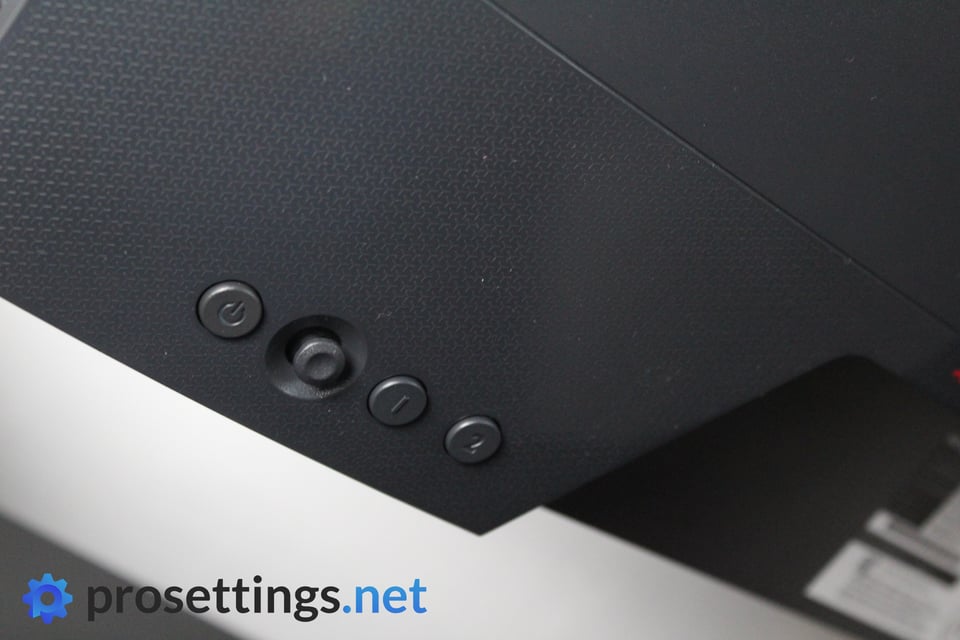
The panel has seen an upgrade from the XL2546K, which is noticeable when comparing the two next to each other. I was already very satisfied with the image quality that the XL2546K put out, but here they’ve gone a bit further, making for a very pleasing viewing experience. Panel uniformity is okay, and there’s practically no backlight bleeding on my unit. All in all, the image quality here is (again: for a TN panel – don’t expect miracles) stellar.
Brightness levels are more than enough to handle a well-lit room, and there are a ton of customization options that allow you to tweak the image to your preferences, but of course you’ll have to take note of one of TN’s inherent drawbacks: the viewing angles. Anything but sitting straight in front of the panel (there’s some wiggle room of course, but no more than 10 degrees or so) will lead to noticeable color changes, so make sure that you’re sitting right in front of the panel when gaming, and not viewing it from an angle.
All of the monitor’s functions can be controlled via a joystick (that’s located at the back of the panel) or via the included S-Switch. That S-Switch can also save your personal settings, allowing you to bring it with you and plug it into any XL2566K monitor, which will then instantly bring up your own settings. If you don’t want to go that route, you can also use ZOWIE’s XL Setting to Share feature, allowing you to upload (and download) settings profiles so that you can import settings profiles on the fly without having to tinker with the menus. This is nothing new (this functionality was also present on the XL2546K) but it’s another example of how ZOWIE really cares about professional and competitive gamers, who will often have to switch between monitors and devices throughout their careers.
Ingame Performance
I sadly don’t have the video equipment to show you any convincing footage of the XL2566K compared to other 360Hz monitors, but I did spend a great deal of time comparing it to IPS monitors and there’s no denying that the XL2566K is smoother. This wasn’t only evident when looking at the panels in ‘laboratory-like’ conditions (such as the UFO test, or viewing slow motion footage of the panels) but also when playing games.
It’s perhaps a very specific example, but I noticed that spraying in CS:GO just felt a lot smoother and clearer on the XL2566K when compared to IPS panels. In case you’re not familiar; spraying in CS:GO violently shakes your screen, and that can cause a blurry mess if your display isn’t up to par. I’m not saying that the two IPS panels I compared it to made spraying a blurry mess, but I did definitely notice a difference.
I want to accompany this previous paragraph with a (pretty obvious to some, but I’ll mention it anyway) disclaimer: this won’t make you an aiming God if you’re coming from a 240Hz monitor, or a good 360Hz IPS monitor. The difference is there, and this is the smoothest and clearest panel I’ve ever used for gaming so far, but we’re talking razor-thin margins here. Margins that can and will matter for people who are very serious about their gaming, but small margins regardless.
Still, the XL2566K is an extremely impressive gaming monitor, and if you’re looking for the fastest, most responsive monitor out there at this point in time then this is it.
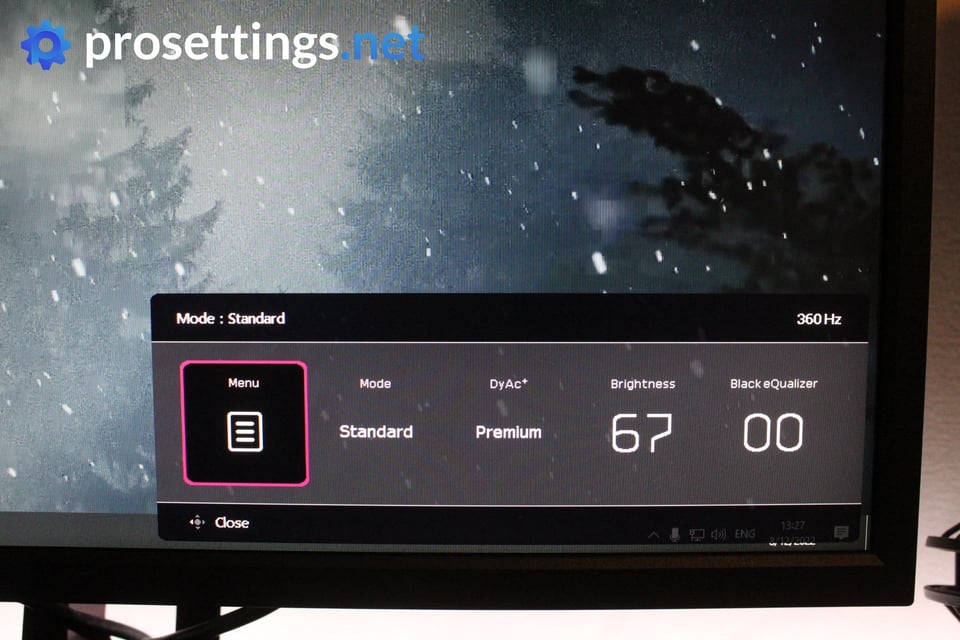
All of that comes at a cost, though. Reaching 360+ frames per second in any game is no easy feat, and there are some games that won’t reliably reach those frames no matter how powerful your PC is. And your PC better be powerful. ZOWIE recommends at least an RTX 30 series (or RX6000 series) graphics card if you’re planning on buying this monitor. I wouldn’t go that far personally (in games like CS:GO you can get a whole lot frames even with slightly lower tier GPUs, as it’s mostly CPU-bound) but let it be clear: you need a beefy PC if you want to make full use of this panel.
If you do have a PC that can run your game(s) of choice at 360 frames per second, the XL2566K is a dream come true for competitive gamers. It’s basically tailor-made for CS:GO (that doesn’t mean it’s not extremely good for other shooters though, because it definitely is extremely good for other shooters) and that shows in some of the functions.
The most obvious one of the bunch is the ability to tweak the color vibrance right there on the display itself. This is super handy because some games (CS:GO being a notable example) look very grey out of the box. This can make models and enemies blend in with the background and, as such, pro and competitive players always recommend you to turn your vibrance up. There are a number of programs to do this for you (or you could do it in the control panel of your GPU) but with the XL2566K you can switch it right on the monitor itself, which is extremely handy since it’s just one button press away.
There’s also Black eQualizer, which lights up darker areas of the game without overexposing the lighter areas, making campers (or people playing in darker areas of the game world) easier to see. In addition to that, you also have a sharpness setting, a low blue light setting, and DyAc+. If you’re not familiar, DyAc is ZOWIE’s motion blur reduction technology, which uses backlight strobing in order to create an even smoother image. Note that this reduces the brightness somewhat, and that not everyone can handle these sorts of technologies (it can lead to headaches for some people) but not every pro uses DyAc, and the XL2566K is extremely smooth and precise even without this technology activated. Still, I use it on my gaming profiles, and I’d encourage you to give it a try as well.
ZOWIE XL2566K Review – Conclusion
If you are a competitive gamer who takes their game extremely seriously and you want to get the fastest and smoothest gaming monitor to help you be the best player you can be, then you have to get the ZOWIE XL2566K right now. If you are anything other than the aforementioned gamer, it’s best to take your time and really consider what you want out of a monitor.
The XL2566K is a fantastic monitor for competitive gamers with a PC that matches their ambitions, but for people who have a mid tier (or budget) rig and/or for people who just want to casually game every now and again this is not the product. Yes, it’s insanely fast and smooth, and yes, the ZOWIE XL line is the monitor of choice for a whole ton of analyzed pros (and the de facto standard monitor in the CS:GO scene) but those are people who think about one thing, and one thing only: performance. This monitor delivers that in spades, but it does make some compromises in order to do that.
The TN panel looks worse than IPS offerings, for example, but it is faster and smoother. The maximum resolution of 1080p isn’t going to satisfy people looking for visual fidelity, but it is the resolution of choice for competitive and pro gamers, and the refresh rate of 360Hz offers extremely smooth visuals, but you need a very beefy PC in order to even reach numbers like that.
All of the above boils down to the following: the XL2566K is basically the best esports monitor out there at this point in time, but it’s certainly not the prettiest to look at, certainly not when compared to other offerings at this price point. That’s okay, because ZOWIE isn’t going for ‘pretty,’ they’re going for performance, and they fully hit all of their marks with this monitor. If you’re not going for all-out performance, you’re better off looking at a cheaper 240Hz monitor, or an IPS monitor, or a monitor with a higher resolution, or a combination of all of the above. But if you do want all-out performance, this should be at the very top of your list.
This product was received for free from the manufacturer and given to our reviewer to test and review. Brands and manufacturers have no editorial control over our reviews. For more information, check out our review FAQ.


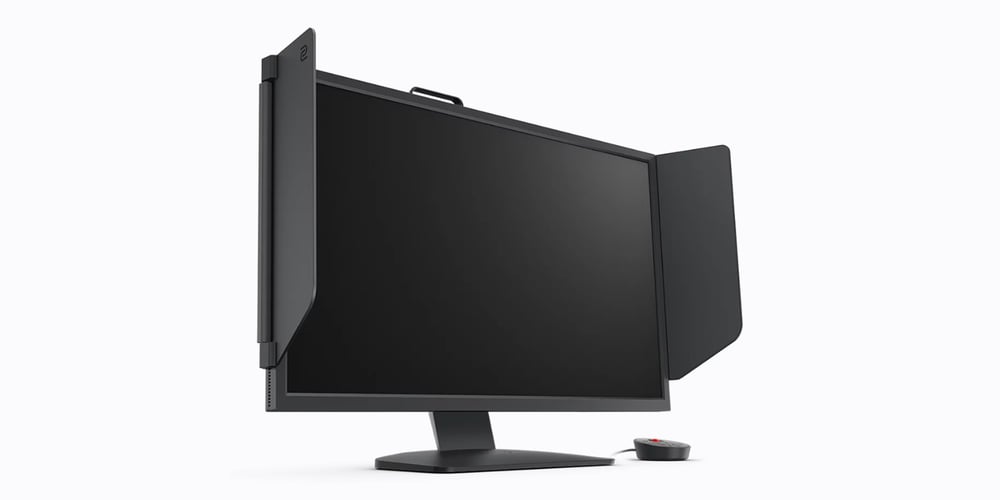





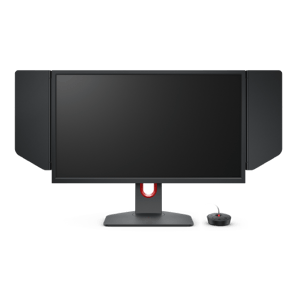


pro’s will switch to 360 Hz or stay at 240
We’re seeing a lot of switches already. The XL2546 was already by far the most used monitor in the pro scene, and given the fact that this XL2566K is basically an upgraded version of that it makes sense to see a bunch of pros switching over.